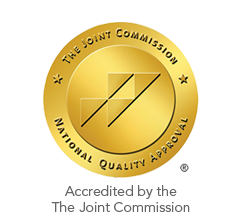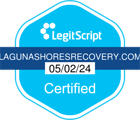Are you or a loved one going through recovery from substance addiction and its co-occurring mental health issues? Are you aware of the many benefits offered by art and music therapies, or creative arts therapy in general? For a long time, music and art have been used to help people recover from physical and psychological pain.
Creative therapy can help treat trauma, grief, anxiety, stress, and addictions. Participants enjoy an improvement in mood, personal relationships, a sense of achievement, and self-esteem. Research has shown that these therapies can promote wellness, enhance memory, enable people to express their feelings, and aid rehabilitation. They are also helpful complementary methods to aid people’s recovery from depression, Alzheimer’s, and trauma.
Creative Art Therapy and Holistic Health
Creative art therapies are the clinical use of music and art as methods of healing. They allow people to express unspoken and often unconscious thoughts. Focusing on the body-mind connection, professional therapists guide people through making and discussing creative arts, including visual arts, music, dance, and expressive writing. This approach is founded on the holistic view of human health as “a wide ecological system.”
When people hear or make pleasant music, or when they see or make art pieces, the brain releases “feel-good” chemicals like dopamine, causing an improved mood. Music and art are natural medicines to the body and the mind because they calm neural activity in the brain. For people who have been through traumatic experiences or are struggling with anxiety and depression, creative therapies help them externalize feelings and create something that pleases them.
Creative arts also help restore effective functioning in the immune system by repairing the amygdala and hypothalamus. In response to the calming effects of making and appreciating arts, the activity levels of neurons in the amygdala decrease, leading to reduced activity in other parts of the brain that cause anxiety, stress, and other mental health issues.
Working with Art Therapists
Art therapists may work with individuals or groups of people. They provide basic materials for making paintings, drawings, sculptures, or other types of artworks. One can create, view, and then talk about what feelings are represented in their work. Sometimes people may collaborate on an art project. The art therapist may use pictures or visual symbols to guide participants’ discussion about what they’ve created and how and why.
Guided art therapy works because creating art influences brainwave patterns while making the brain release de-stressing chemicals. Guided conversations about art can help people reveal and express hidden emotions. By visualizing and then verbalizing these feelings of fear and anxiety, art therapy creates a safe space and a newfound sense of freedom.
Working with Music Therapists
Music therapy involves listening to music, making music, singing, discussing, and interpreting imagery. Music therapists intentionally use musical rhythm to synchronize with the rhythm of the resting heart (70 beats per minute). Physiologically speaking, music can lower heart rate and blood pressure and ease muscle tension. This also reduces fear and improves mood. Music has been found to decrease the intensity of pain and stress.
Music therapists encourage participants to create music as self-expression. Music improvisation in the form of songwriting or performance gives a person agency to be creative. One is guided to share the experiences or feelings behind these improvisations. The therapist selects certain lyrics, plays music with them, and encourages participants to use these to guide their improvisation. Speech and drama are sometimes integrated into music therapy. The use of imagery when doing music therapy is designed to stimulate the mind to visualize a safe place or positive change.
Other Types of Creative Arts Therapies
Creative arts therapy is not limited to just art and music. Take dance therapy for example. As a dramatic art, it uses movement as nonverbal self-expression to improve emotional health, socialization skills, or physical abilities. A dance therapist may coach people to use different roles, styles, and interpretations to release emotions or confront difficult events in their imaginary world. Drama therapy or movement-based creative expression has a similar effect in helping people re-enter certain situations and deal with difficult emotions such as stress, anxiety, PTSD, or depression.
Literary arts can also have therapeutic effects. Poetry therapy, for example, uses poetry and verse to guide people by reading out and writing down their thoughts as poems. They have an opportunity to find their voice, which is a wonderful healing process. Similarly, keeping a journal allows people to access the wisdom they have from life’s experiences. By accessing the unconscious self, they gain a better connection with themselves.
Creative art therapy does not contradict mainstream medical approaches. Because the human system is a multi-dimensional and holistic ecosystem, people can integrate creative and artistic processes to complement biomedical treatments.
Are you aware of the many benefits offered by art and music therapies, or creative arts therapy in general? If you or a loved one are in recovery from substance use disorder, art therapy can be a wonderful addition to your treatment plan. Creative therapy can help treat trauma, grief, anxiety, stress, and addictions. Participants enjoy an improvement in mood, personal relationships, a sense of achievement, and self-esteem. At Laguna Shores Recovery, our team of licensed mental healthcare professionals and therapists can coach and counsel you on using these methods. Our compassionate and knowledgeable staff will build a personalized treatment plan for everyone who comes through our door. Our full medical residential facility offers a range of treatments, including traditional methods such as diagnosis, behavioral therapies, and 12-step programs as well as creative therapies to help you or your loved one. Whether you’re ready for treatment or are simply looking for information, call our team here at Laguna Shores Recovery today.
References:
https://www.ncbi.nlm.nih.gov/pmc/articles/PMC2804629/

 Matthew Beck B.A, M.A, LMFT
Matthew Beck B.A, M.A, LMFT 


